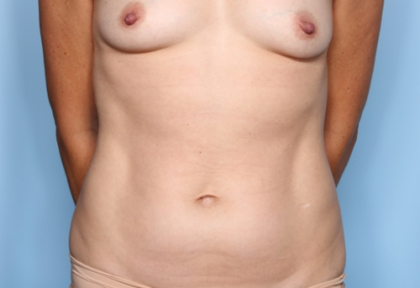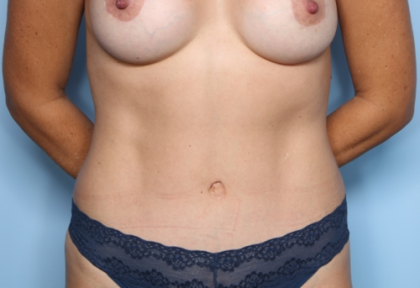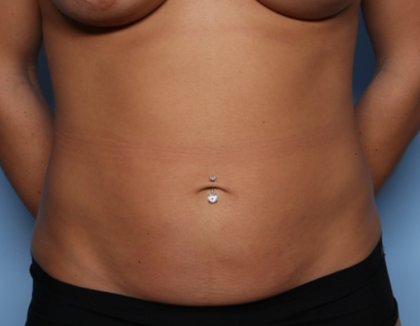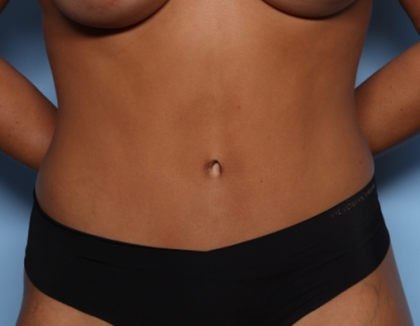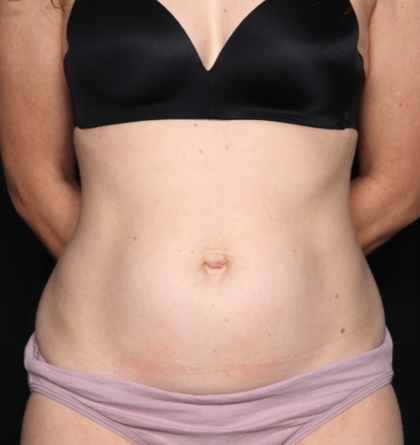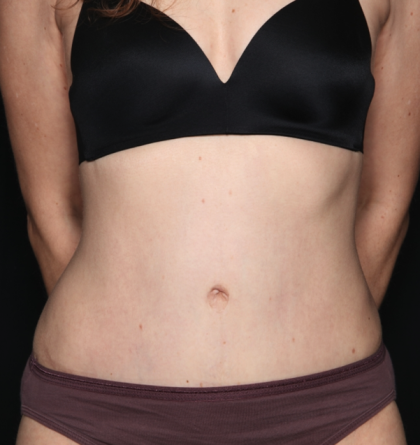Tummy Tuck
Offered at our convenient location in New Jersey

Abdominoplasty (tummy tuck surgery) can dramatically improve your figure and self-confidence and can help you look and feel years younger. Some patients find it difficult to lose their excess tummy or protruding abdomen, even with regular exercise and smart dietary choices.
This especially occurs after pregnancy, where the inner abdominal muscles, as well as the outer abdominal skin, can become permanently stretched out. Surgical assistance may be required for these patients to achieve a younger, slimmer physique or to simply recover the shape which has been lost. During an abdominoplasty consultation at Premier Plastic Surgery Center of New Jersey, Dr. Glatt can determine if the tummy tuck procedure is right for you. Dr. Glatt is a board certified plastic surgeon and has many years’ experience performing abdominoplasty with remarkable results.
Contents
- 1 About
- 2 The Tummy Tuck Procedure
- 3 Abdominoplasty with Liposuction
- 4 Contact the Premier Plastic Surgery Center of New Jersey
- 5 Before and After Photos
- 6 More Information about Abdominoplasty – By Dr. Brian S. Glatt
- 7 What to Expect Following Your Abdominoplasty
- 8 Drain Care Instructions
- 9 Things to Report to our Office
- 10 Contact the Premier Plastic Surgery Center of New Jersey
About
A tummy tuck will help smooth out your abdomen and improve the curves of your profile. A tummy tuck is an excellent treatment to combine with other cosmetic procedures.
Oftentimes, Dr. Glatt performs a tummy tuck in New Jersey along with complementary procedures, such as breast lift surgery (“mastopexy”), liposuction (“lipoplasty”), and/or breast augmentation (“augmentation mammaplasty”). Liposuction and tummy tuck surgery performed together can yield a flatter, firmer abdomen and smoother contours of the flanks and back. Combinations of these procedures are commonly referred to as a “Mommy Makeover,” which is one of the things Dr. Glatt is most known for. These body contouring procedures, such as a tummy tuck and breast lift, are commonly performed on women who have been left with stretched-out abdominal and breast skin as well as laxity of the abdominal muscles.
During your consultation, an individualized treatment plan will be created by yourself and Dr. Glatt with consideration to your body type, aesthetic goals, and overall health. He provides his patients with the latest and most up-to-date techniques in order to produce optimal tightened and toned abdominoplasty results.
Abdominal muscles are weakened by pregnancy and age.
Patients who lose significant amounts of weight may not be happy with their newly visible yet still overstretched stomach muscles. Excess, saggy skin – also a consequence of pregnancy, weight loss, and age – can combine with lax abdominal muscles to produce aesthetically unfavorable midsections. Abdominoplasty, offered through the Premier Plastic Surgery Center of New Jersey, may be the solution for patients who desire a flat, trim stomach. In the tummy tuck procedure, Dr. Glatt removes excess skin and reshapes the stomach so that it is taut and toned.
The Tummy Tuck Procedure

If you are considering a tummy tuck, you are in good company. Tummy tuck operations were the fifth most commonly performed cosmetic surgery procedure in 2005, according to data presented by the American Society of Plastic Surgeons.
Although a tummy tuck requires an incision along the lower abdomen, the scar is typically kept extremely low, just above the pubic hairline and within the bikini line. Besides the removal of excess skin and fat, the stretched out, deeper, abdominal wall itself is tightened up – similar to a tightened vest placed under a jacket. This maneuver literally redefines the shape of the stomach. At this point, the abdominal skin is perfectly tailored to the newly refined inner shape, and the excess, loose skin is removed.
Dr. Glatt will typically finish off the procedure by performing liposuction of the flanks (or sides) to help create a more perfectly pleasing overall contour. Patients can generally return to work two weeks after their surgery. Abdominoplasty patients come to the Premier Plastic Surgery Center of New Jersey from all parts of the Tri-State Region and the northeast. To schedule a tummy tuck consultation, contact Dr. Glatt and his staff today.
Abdominoplasty with Liposuction
While a tummy tuck procedure is the best surgical solution for tightening stomach muscles and eliminating loose, unwanted skin; this procedure alone cannot remove the fat deposits that sometimes plague the sides of the abdominal region. Therefore, liposuction is almost always included as part of abdominoplasty performed by Dr. Glatt, so that the best result possible can be attained.
Contact the Premier Plastic Surgery Center of New Jersey
To learn more about abdominoplasty, contact Premier Plastic Surgery Center of New Jersey today and schedule a tummy tuck consultation with our board-certified plastic surgeon.
Before and After Photos
More Information about Abdominoplasty – By Dr. Brian S. Glatt
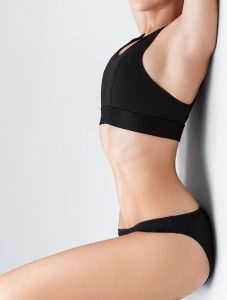
Abdominoplasty is a procedure which produces dramatic results. When I say dramatic, I mean this in an entirely positive way as it is not a subtle result. It is not something where you need to stare and figure out someone had it done but instead it is something that is really apparent that the abdominal area has been greatly improved in overall contour and look.
A vast majority of patients undergoing abdominoplasty surgery are not overweight. Instead they are people who tend to be extremely physically fit but have developed laxity of their overlying skin and soft tissues as well as the abdominal wall most commonly as the result of prior pregnancies. Pregnancy or prior weight gain can cause stretching of the overlying skin, soft tissues as well as the abdominal wall which be stretched beyond the body’s capacity to fully recoil.
“I do not have a patient that I recall which has regretted undergoing this procedure and the satisfaction following abdominoplasty surgery remains extremely high when performed in the right patients.”
When elasticity is lost in the structures, there is a certain laxity which develops which cannot be corrected by any means of exercise or working out. In these cases, surgical intervention such as abdominoplasty surgery is the only means at definitely correcting the situation. In addition, abdominoplasty surgery is long lasting. It is not one of those procedures which seems to be repeated every so often and in fact it is quite rare to perform a secondary abdominoplasty surgery in my practice. Result should last at least 10 to 15 years and the procedure may never need to be repeated during the course of the patient’s lifetime.
I tend to dislike the term tummy tuck as this gives the patient an impression that the operation is small and cute, which it is not. I like to be very straightforward with my patients in describing this procedure and the correct and more formal term is abdominoplasty.
An abdominoplasty begins with an incision that is very low on the abdomen, most commonly just at the edge of the pubic hair line. If the patient had a prior C-section then that scar is incorporated into the lower portion of the abdominoplasty incision and used. The scar then does extend out to the sides reaching just about hip to hip in most people. So the scar is quite long, however, it is kept very low at the level the of pubic hairline and certainly below the level of where one’s underwear would cover.
Many patients have abdominal fat and laxity that cannot be corrected with exercise or dieting.
The incisions then extended through the skin and underlying soft tissue until the abdominal wall is reached. At this point, the skin and soft tissue is peeled off of the patient’s abdominal wall all the way up to the middle portion of the ribs called the xiphoid process. Now the entire abdominal wall and muscle layer is exposed and evaluated. Most patients who have an abdominoplasty procedure are found to have a rectus diastasis which is a stretching out of the abdominal wall which causes laxity. This commonly manifests as bulging in the central portion of the abdomen creating a protuberant appearing abdomen. Correction of the rectus diastasis is arguably the number one most important part of obtaining an outstanding contour as part of the final result.
Dr. Glatt will work meticulously to correct and contour your abdomen for an impressive outcome.
The abdominal wall tissue consists of a very strong layer called fascia which is the layer that sits just along the top portion of the muscle and is intimately attached to the underlying muscles. So the muscles themselves are not actually tightened however it is this overlying layer of fascia which is tightened that brings the muscles along with it. The fascia is then aggressively tightened along the midline creating an internal corset effect and greatly enhancing the patient’s overall shape and silhouette. As a matter of fact, most of the time patients are tightened so much that this leaves less room inside the abdominal wall cavity for the stomach to expand after eating and therefore, eat much less after surgery and actually most patients go on to lose a good amount of weight after surgery. On average, 8-10 pounds.
After the abdominal wall is tightened up, the skin and soft tissue which has been raised is now pulled down like a window shade and the excess redundant tissue is excised; thereby eliminating all of the laxity as well as redundancy of the excess overlying skin which had been stretched out. In this way the outer tissues are better matched in contour to the deeper frame.
Most commonly when the skin is removed the patient is placed into a flexed position on the operating room table. You can imagine a situation where if you are standing up straight the overlying shirt may be taut against your body. However, if you were to bend over the shirt wrinkles and laxity is developed. This is exactly what happens to the skin and with the skin we know that it obviously does go on to stretch out so, therefore you would like to inset and resect the skin in as tight a fashion as possible. The deeper tissues, as well as the overlying skin, is thereafter closed and I use all internal absorbable stitches when closing my abdominoplasty incisions.

Many people are very curious about what happens to the belly button or umbilicus. When the skin and soft tissue is being raised, once the level of the umbilicus is reached this structure is circumferentially incised and separated as a stalk attaching to the abdominal wall itself. This leaves a hole in the overlying abdominal skin flap where the belly button used to be. The belly button stays attached to the patient’s abdominal wall on its own little stalk and when the excess skin is resected and excised I feel underneath the flap where the belly button is located, mark that spot and make a new hole in the skin for the belly button to be brought through.
Scars are hidden within the natural contours of the body and will fade with time.
This means that most patients do in fact also have a scar right around their belly button at the completion of an abdominoplasty procedure. Occasionally not all of the skin can be removed which includes the prior site of the belly button. This means that this area needs to be closed primarily therefore produce a small vertical scar very low on the abdomen close to the incision. If there is a high likelihood of this situation then my patients are advised of this preoperatively during their consultation and very aware of it. This scar typically goes on to heal very well and fades out over time.
Where is the Abdominoplasty Procedure Performed?
The procedure is done under general anesthesia and typically takes somewhere between three to four hours to complete.
I perform all my abdominoplasty procedures in a hospital setting, most commonly Morristown Medical Center. All of my patients stay overnight in the hospital and are discharged the following day sometime in the middle of the day. They are admitted to a private room in the hospital on a floor which is very familiar in taking care of patients who have just undergone abdominoplasty surgery.
Patients are provided with a pain pump through which they may press a button if they need any pain medicine; therefore, making sure they are kept comfortable at all times postoperatively. Many patients believe that this is procedure is extremely painful and in fact it is not the case. It is comfortable overall, however, as you are stuck in a flexed or hunched over position given that you are tailored that way as part of the closure. Patients can gradually stand up straighter and straighter every day and by approximately 7 to 10 days, patients have no problems standing up completely straight and lying down straight in bed. Until that time, they do need to stay flexed in bed on their back with legs elevated as well as the head of the bed elevated.
“I use drains that are round in orientation therefore they do not hurt upon removal.”
Two surgical drains are routinely used at the time of the surgery called Jackson-Pratt drains. The drains are little plastic tubes that are left inside under the surface of the skin which come out through small stab holes in the pubic area. They are sutured in place so they cannot be inadvertently pulled out or fall out by accident. These tubes outside the body then connect to a little plastic grenade bulb called a drain and this drain is placed on a very low level of continuous suction. They are extremely easy to manage and patients are instructed on how to care for them during their hospital stay. I allow all my patients to shower with the drain and they generally do not cause any problems. They are however extremely annoying to have and they fast become the most annoying part of their recovery. Fortunately, these drains are removed at the first postoperative visit which typically occurs somewhere between 6 to 10 days after surgery.
Dr. Glatt sets you up for a healthy, positive recovery that provides long-term results.
The small suture holding them in place is cut and the drain is simply pulled out without any discomfort and the hole from which it came closes up on its own. Patients also are placed into an abdominal binder at the completion of the surgery which provides a high level of compression over the abdomen which they wear for three to six weeks following surgery. Patients tend to like the binder and are very comfortable with the additional support it provides. Many of my patients tend to continue to use the binder several months after the surgery as a small way to gain additional support following the procedure.
What is the Recovery Like Following Abdominoplasty Surgery?
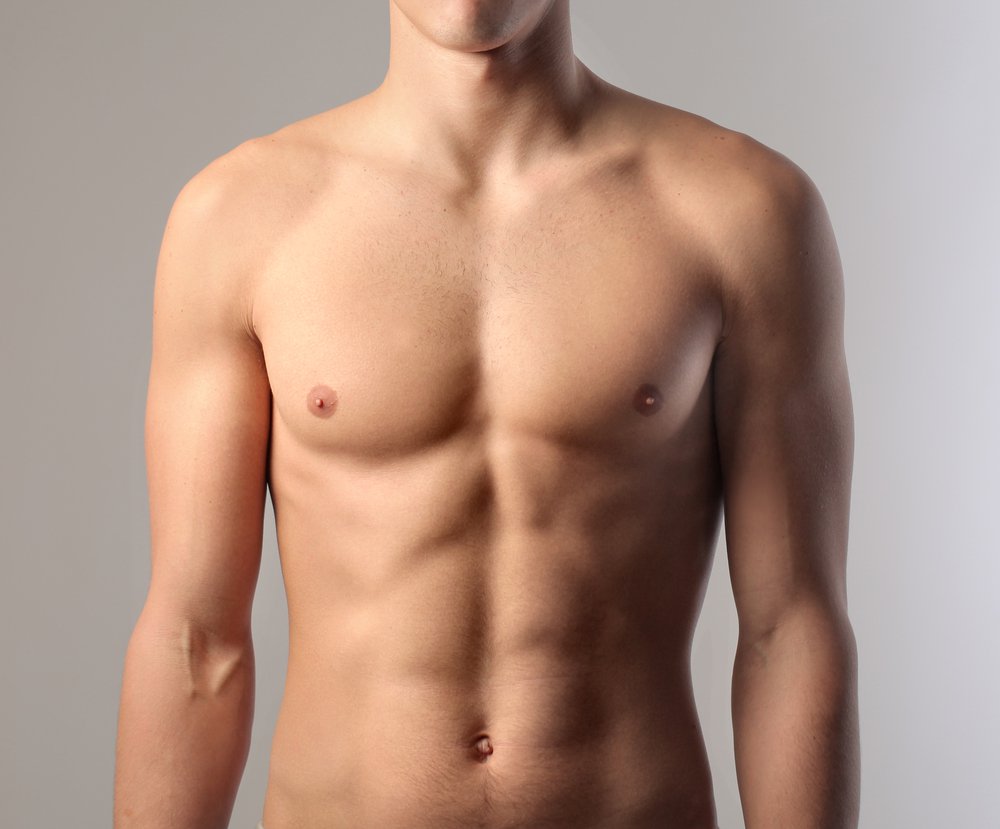
Recovery following abdominoplasty surgery is usually more extensive than most people initially realize. Despite this I do not have any patients in my practice which have ever regretted undergoing abdominoplasty surgery. This is because I clearly outline what this recovery is going to be like at the initial consultation and I am very upfront with them about this.
One thing that I find very concerning is when other surgeons tend to sugar coat the recovery in order to encourage patients to move towards surgery when in fact they may not be completely ready for the recovery. No patient should undergo abdominoplasty surgery without being fully informed of what the recovery will be like or being fully prepared to undergo a proper recovery in order to ensure stable outstanding results.
The recovery is just as important and part of the procedure as the procedure itself.
The first week following abdominoplasty surgery I described as not being able to take care of any body other than themselves. In fact, patients will typically tend to need someone around to help them with small activities of daily living. During the first few days even going up or down the stairs would be somewhat of an effort and they will require a little bit of assistance for this. Small things such as getting on and off the toilet, getting in and out of the shower, caring for themselves, and in and out of the bed or couch will also require some assistance during the first few days.
Patients tend to get stronger very fast and by 7 to 10 days they are more independent.
Most patients are unable to drive for approximately a week and half and I prepare my patients to make other arrangements if anybody needs to be driven by them for this time. It is not that I do not let them drive but they are physically unable to drive for approximately a week and a half. Drains are typically removed at this time point and patients start feeling much better.
By three weeks, patients are much more mobile, driving, able to perform all activities of daily living without any problem, and most are back to their normal routine for the most part. I do not allow my patients to do anything that would work up a sweat which would include any kind of aerobic exercise or activity for three weeks following surgery. In addition, there is no lifting, pushing, pulling, straining, or twisting for six weeks after surgery. I allow patients to return to aerobic activity after three weeks which would include walking, running, jogging, elliptical, or sitting down bike. However, anything involving any kind of intensive stretching would have to wait until 6 to 12 weeks.
There is no lifting, pushing, pulling, or straining for six weeks which would include upper body work and I do not allow patients to exercise abdominal muscles for three months following surgery. All this is intended to minimize any potential complications such as bleeding, fluid collection, or poor wound healing which are easily avoided by following all postoperative instructions.
An abdominoplasty is an operation that is outstanding in three weeks, even better at six weeks, and even better at every time point thereafter for up to a year.
By six weeks, I consider patients to be fully recovered, although, there is a small amount of swelling which persists for three to nine months following surgery. At one year most healing is thought to be complete. However, the scar is still tending to fade. It typically takes the patients 3 to 12 months for their scar to completely fade out, however, in some patients it takes much longer up to 2 years. The scar, however, will fade over time.
Is Liposuction Part of an Abdominoplasty Procedure?
“I utilize liposuction for almost every abdominoplasty case that I do.”
The most common areas for liposuction include the flanks which are the sides, the mons pubis area under the pubic hair or special contouring in the midline to enhance definition of the patient. I utilize liposuction in approximately 95% of my abdominoplasty cases and it is on as needed basis. If I determine that the patient would benefit at all from liposuction then it is performed and is not considered an additional cost or an additional line item but is instead, in my view, considered part of the abdominoplasty itself.
I cannot understand producing a smooth, flat abdomen and leaving people with excess tissue on the sides which may be unsightly. To me, abdominoplasty surgery consists of rejuvenation of the entire abdominal area, which would include liposuction for additional contouring where needed. If liposuction is performed, these areas will become bruised and swollen afterward for a period of 2 of 3 weeks and patients may have an additional amount of discomfort in these areas as well.
Board Certified Plastic Surgeon Brian S. Glatt MD, FACS and his experienced staff believe a vital component to an optimal surgical outcome is advance preparation. For this reason, all surgical patients are given their post-operative prescriptions and directions for use of each medication prior to surgery. All patients are also provided with specific written post-procedure instructions, as well as information outlining what to expect following their abdominoplasty surgery.
What to Expect Following Your Abdominoplasty
- You will have a support binder that will be placed on you in the operating room immediately following the procedure. This binder is to be worn constantly (24 hours a day), except when showering, for several weeks following surgery. The binder may be removed to shower, which you may begin to do 48 hours following your procedure. The binder can also be washed and allowed to air dry.
- You will initially need to keep your abdomen flexed at all times for up to 1 week. When in bed, place 2 pillows under your knees and try to prop the head of the bed up with 2 pillows also. When walking around, try to stay hunched over. By the end of the first week, you should be able to straighten out your abdomen. DO NOT push yourself or try to do too much too fast! Strenuous activity and exercise should be avoided for 3 weeks. Walking is permitted provided it is not strenuous (nothing to purposefully work up a sweat).
- You will have drains in place after surgery. You may shower with the drains 48 hours after surgery. You can safety pin them to a string or shoelace which can be loosely hung around your neck. Pat the drain exit sites dry after showering and apply some antibiotic ointment to the sites where they exit your skin. You will be given a prescription for an oral antibiotic which should be taken during the entire time that the drains are in. Make sure you continue to take your antibiotic as long as your drains are in!
- You will not need to have your sutures removed – they are all on the inside. You will have steri-strip paper tapes or a glue tape over your incisions, which can get wet in the shower. Just pat the area dry afterward and put your binder back on. In addition, you should apply antibiotic ointment with a Q-tip inside and around the edge of your belly button, as well as to the areas where the drains exit your skin.
- You may notice numbness in the surgical area because of the interruption of small sensory nerves. This is almost always temporary and will gradually improve. It may take a full year for full sensation to return to your abdomen. Be cautious of sun, heating pads, and heat lamps, etc., until sensation returns to normal.
- You may experience some pain or discomfort for a few days following surgery. Do not hesitate to take medication for this. Remember that pain medication will make you drowsy. DO NOT DRIVE while taking this medication. Pain medicine may also make you constipated, so you may need a mild over-the-counter laxative. Treat any constipation aggressively with over the counter laxatives (e.g. DulcoLax, Ex-Lax)
- You should drink extra fluids for 48 hours after your procedure to maintain fluid and electrolyte balance. Eat light meals the first day (soups, Jell-O, juices, tea, Gatorade, etc.). Then gradually progress to a regular diet. A nutritious diet is important for wound healing. You may wish to take vitamins.
- Please call our office with any abnormal reactions to the prescribed medications, such as hives or itching. Let us know if you develop a temperature of over 101 or any excessive pain, redness, or swelling.
- You should not sit for long periods of time for the first 3 weeks following surgery in order to promote circulation to your legs. If you must travel, be sure to get up and walk around every 30-60 minutes.
Please feel free to call our office with any questions or concerns. We want you to be as comfortable as possible during the healing process.
Drain Care Instructions
Drains are placed under the skin during surgery to remove residual blood or other fluids that may collect there. Surgical drains decrease the chance of infection, decrease the chance of fluid collections accumulating under the skin, and promote wound healing. It is important that the drain be left in place until the drain output decreases to reasonable levels (This is usually less than 30 ML over a 24 hour period). You do not need to stay in the hospital until the drain is ready to be removed. The instructions below will help you to care for the drains at home. If you have any questions, please do not hesitate to call our office.
Instructions for Emptying the Drains
- Wash your hands
- Remove plug from pouring spout
- Pour drainage into measuring cup (provided to you)
- Flatten the drain container (squeeze it) and replace the plug into the spout while maintaining hold
- Record the date, time, and amount of drainage (in cc or ml, Do NOT measure in ounces) on the recording sheet provided. In addition, note any problems you have encountered.
- Empty the containers two to three times per day.
- Do not worry if clotted material shows up in the drains. This is normal and does not indicate a problem. The drain fluid may change color and become more clear (from red to orange, to yellow) This is normal and to be expected. The overall amount should also decrease over time.
- You should treat the area where the drain exits your skin with some antibiotic ointment of your choice (such as Neosporin, Bacitracin, etc…) 2-3 times per day.
- You may shower with your drain in place (Occasionally, Dr. Glatt will not want you to shower with your drain. He will let you know if this is the case). To do this you may put a string or shoelace around your neck and safety pin the drains to the string or you can safety pin the drains to a hanging towel. Just let soap and water run over the site – do not actively scrub the drain site. Pat the area dry with a clean towel afterward and apply antibiotic ointment.
Things to Report to our Office
- Redness or drainage around the drain site
- Fevers > 101
- Inability to keep the drainage container flat and on suction
- Sudden stoppage of drainage fluid into the container
Contact the Premier Plastic Surgery Center of New Jersey
To learn more about abdominoplasty, contact Premier Plastic Surgery Center of New Jersey and schedule a tummy tuck consultation with our Board Certified Plastic Surgeon.





